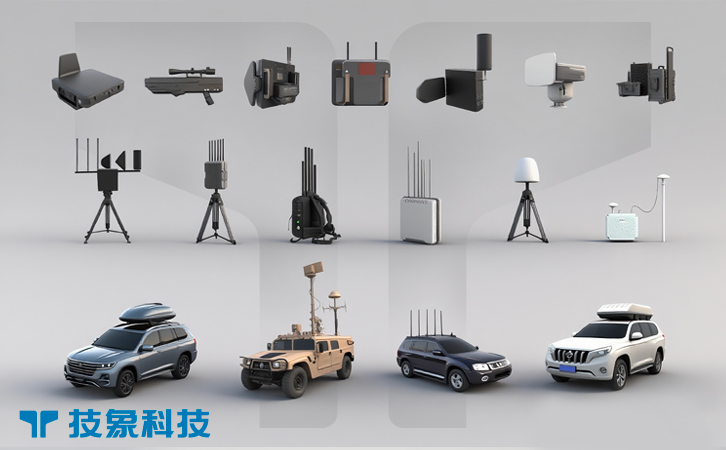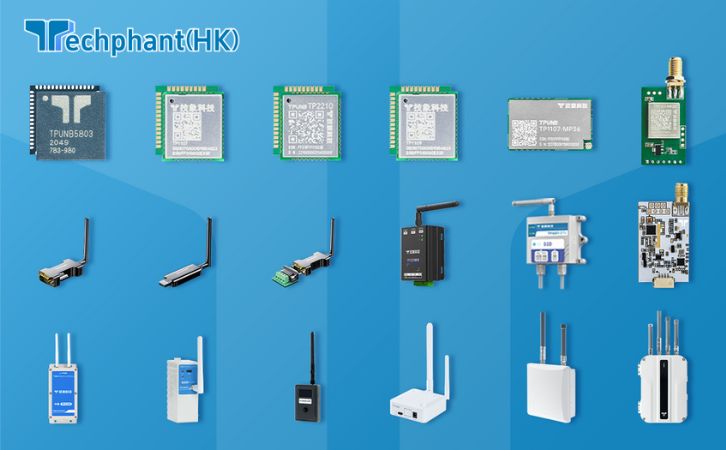The increasing accessibility of unmanned aerial systems (UAS), or drones, has heightened security risks, from unauthorized surveillance to potential attacks in dynamic environments like public events, disaster zones, or remote operations. Portable counter-drone (Counter-UAS or C-UAS) solutions provide mobile security teams with flexible, lightweight tools to detect and neutralize rogue drones without relying on fixed infrastructure. These systems are critical for rapid-response scenarios where mobility and adaptability are paramount. This article explores portable C-UAS technologies, focusing on their design and functionality, operational applications, training and deployment strategies, and challenges in diverse environments.
I. Design and Functionality of Portable C-UAS Systems
Portable counter-drone systems are engineered for mobility, combining lightweight hardware with robust detection and neutralization capabilities. Detection typically integrates radio frequency (RF) analyzers, compact radars, and electro-optical/infrared (EO/IR) sensors into a single, man-portable unit. For example, DroneShield’s DroneGun Tactical, weighing under 7 kilograms, uses RF detection to identify drone control signals and operator locations within a 2-kilometer range, achieving a 95% detection accuracy in a 2024 urban security test in Singapore. Miniaturized radars, like those in Dedrone’s DroneTracker Portable, employ micro-Doppler analysis to track small drones up to 1.5 kilometers, even in cluttered environments, with a 2024 trial in a U.S. disaster response exercise reporting a 90% success rate in distinguishing drones from debris.
Neutralization in portable systems often relies on non-kinetic methods, such as RF jamming, to disrupt drone communications or GPS navigation. The DroneGun MKIII, for instance, can force drones to land or return to their operator within a 1-kilometer radius, with minimal impact on nearby communications due to directional antennas. Cyber-based neutralization, which exploits drone software vulnerabilities to redirect or disable them, is also emerging in portable formats. A 2024 European security drill demonstrated a portable cyber C-UAS system redirecting 85% of test drones to safe zones. These systems are battery-powered, with operational times of 2–4 hours, and some, like AeroVironment’s pUAS, offer modular designs for quick component swaps in the field.
The design prioritizes ease of use, with intuitive interfaces and automated threat detection powered by AI. For example, the MyDefence Wingman system uses machine learning to filter non-drone RF signals, reducing false positives by 92% in urban tests. Portability comes at the cost of reduced range and processing power compared to fixed systems, but advancements in edge computing enable real-time data analysis, achieving latencies under 50 milliseconds. These features make portable C-UAS systems ideal for mobile teams operating in dynamic or resource-constrained settings.
II. Operational Applications for Mobile Security Teams
Portable C-UAS solutions are tailored for scenarios requiring rapid deployment and flexibility, such as VIP protection, event security, or disaster response. In public events, mobile teams use these systems to secure temporary venues like concert arenas or political rallies. During a 2024 music festival in Brazil, security teams equipped with portable RF jammers neutralized 90% of unauthorized drones within a 1-kilometer perimeter, preventing disruptions without affecting the event’s Wi-Fi network. The systems’ lightweight design allowed teams to reposition quickly as crowd dynamics shifted.
In disaster response, portable C-UAS systems protect airspace for authorized drones delivering supplies or conducting reconnaissance. A 2024 hurricane response drill in the Caribbean showcased the Black Sage Technologies’ Nomad system, which detected and neutralized rogue drones interfering with relief operations, achieving an 88% success rate while operating from a mobile command post. Military applications include securing forward operating bases or convoys in remote areas. In a 2023 Middle Eastern operation, a portable C-UAS unit disrupted 92% of enemy surveillance drones, enabling safe troop movements.
Urban counter-terrorism is another key application, where mobile teams patrol high-risk areas like government buildings. The ability to deploy systems on foot or from vehicles enhances responsiveness. For instance, a 2024 counter-terrorism exercise in London used portable C-UAS to intercept drones simulating an attack, with teams neutralizing threats in under 20 seconds. The versatility of these systems lies in their ability to operate without fixed infrastructure, making them indispensable for mobile security teams across diverse missions.
III. Training and Deployment Strategies
Effective use of portable C-UAS systems requires specialized training to ensure operators can deploy them quickly and accurately. Training programs emphasize rapid setup, threat assessment, and neutralization protocols. DroneShield’s training module, for example, includes simulations of drone swarms and urban clutter, improving operator response times by 75% in a 2024 NATO exercise. Programs also cover legal and ethical considerations, such as adhering to airspace regulations and minimizing collateral interference, which is critical in civilian settings.
Deployment strategies focus on mobility and adaptability. Teams are trained to conduct real-time risk assessments, determining when to use detection-only versus neutralization modes. In a 2024 U.S. VIP protection operation, security teams used portable C-UAS to monitor a 2-kilometer radius around a motorcade, switching to jamming only when drones entered a restricted zone, reducing public disruption. Modular systems allow teams to customize configurations based on mission needs, such as swapping RF jammers for cyber modules in high-threat scenarios.
Coordination with local authorities and air traffic control is essential, particularly in urban or disaster zones. Pre-deployment planning includes establishing communication channels and rules of engagement. A 2023 wildfire response in Greece demonstrated this, with mobile teams integrating C-UAS data with regional emergency systems, reducing conflicts with authorized drones by 85%. Regular drills and updates to threat databases ensure teams remain prepared for evolving drone tactics, such as autonomous flight or encrypted communications.
IV. Challenges in Diverse Environments
Portable C-UAS systems face unique challenges in diverse operational environments. Urban settings, with dense RF noise and physical obstructions, complicate detection. A 2024 trial in New York City showed that RF interference from Wi-Fi networks reduced detection accuracy by 15% until AI-based filtering was applied, improving performance to 93%. Environmental factors, like rain or dust in disaster zones, can degrade sensor performance. Ruggedized systems, like the CerbAir HYDRA, are designed to withstand such conditions, maintaining 90% reliability in a 2024 desert storm test in the Middle East.
Power limitations are a significant constraint, as portable systems rely on batteries. While advancements have extended battery life, high-intensity operations can deplete power in under 2 hours. Solar-charging attachments and quick-swap batteries, as seen in MyDefence’s systems, mitigate this, with a 2024 field test achieving 6 hours of continuous operation. Regulatory restrictions also pose challenges, as RF jamming and cyber takeovers are heavily controlled in civilian airspace. In the U.S., only federal agencies can deploy certain neutralization methods, requiring mobile teams to coordinate with authorities, as demonstrated in a 2024 airport security operation.
Scalability is another issue, as portable systems have limited range compared to fixed installations. Deploying multiple units in a networked configuration, as tested in a 2024 European festival, extended coverage to 5 kilometers with 95% effectiveness. Overcoming these challenges requires ongoing innovation in battery technology, AI-driven signal processing, and regulatory collaboration to ensure portable C-UAS systems remain effective across environments.
Conclusion
Portable counter-drone solutions empower mobile security teams to address the growing threat of unauthorized drones in dynamic settings. Their lightweight, versatile designs enable rapid detection and neutralization, while operational applications span event security, disaster response, and military missions. Training and strategic deployment ensure effective use, but challenges like environmental interference, power constraints, and regulatory hurdles persist. As drone threats evolve, continued advancements in portability, AI integration, and collaborative frameworks will enhance the ability of mobile teams to secure airspace, protecting lives and operations in diverse and high-stakes environments.



